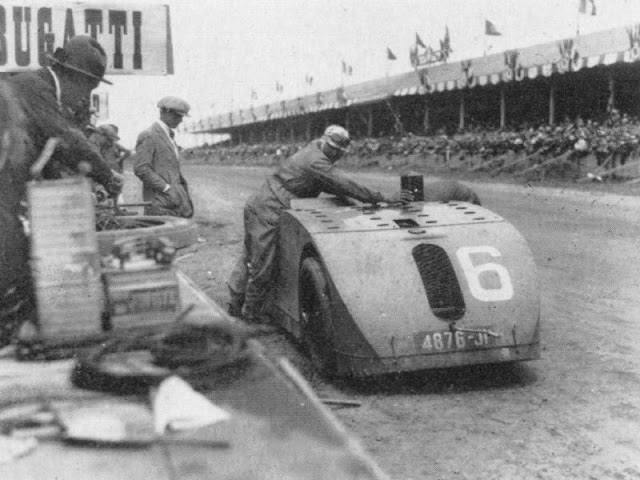Ettore Bugatti designed a revolutionary car for the 1923 GP of France at Tours: this incredible car was named Type 32 and nicknamed “Tank” for its particular look. Four examples were made, each with a 2.0 L (1991 cc/121 in³) straight-8 engine based on that in the Type 30. Only two cars have survived to date.
The Bugatti T 32 tank was the first example in history of aerodynamics applied to the automotive industry: Bugatti observed the section of an airplane wing and had the intuition of designing a car with the same shape to facilitate airflows. A genial intuition anticipating by decades the aerodynamic studies applied to the F1 cars of the Seventies and a pioneer's work that deeply influenced the history of design on the following years.
The 1923 edition of the Tours GP was waited with excitement by the press and the public: after all it was the GP of the Automobile Club of France, the most watched racing event of that time. The 1923 edition had 17 cars: Bugatti (with 4 cars), Delage (1 car), Sunbeam (3 cars), Rolland Pilain (2 cars), FIAT (3 cars) and Voisin (4 cars). The Bugatti team was composed by:De Vizcaya driving the T32 chassis number 4958: during the race had a bad crash in the first lap at the “La Membrolle” corner and retired. Friederich driving the T32 chassis number 4059 numbered 6 in the race, he was the chief pilot of the Bugatti team and managed to arrive in third place. Prince de Cystria driving the T32 chassis number 4060, during the race he hit a sand bank after being overtaken by Segrave and Divo, regained road but finally retired. Pierre Marco on T32 chassis number 4061 retired after 4 laps. During the race there was battle between the Fiat and Sunbeam for the first place but few laps before the end the FIAT retired and the Sunbeam of Segrave triumphed, after 7 hours of racing. Second arrived the other Sunbeam of Divo. Third the Bugatti 32 of Friederich. The English car magazine “The Autocar”described the 1923 GP of Tours as « the most exciting Grand Prix ever seen ».The Bugatti 32 Tank were undoubtedly fast, one later being timed at 117mph over a kilometer, but their remarkably short wheelbase caused high speed handling difficulties for their drivers, aggravated perhaps by their bodywork generating aerodynamic lift.
(Via: www.bugatti-32.com)


